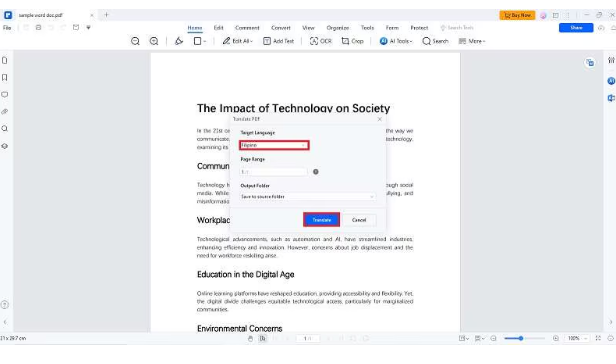The phrase “English to Tagalog” has become one of the most searched terms online, especially by people who want to communicate better in the Philippines. Tagalog, the base language of Filipino (the national language of the Philippines), is spoken by millions of people across the country and around the world. Understanding how to translate from English to Tagalog helps not only travelers but also students, business professionals, and even online content creators who want to reach a wider audience.
In this article, we’ll explore the importance of English to Tagalog translation, how to use online tools, the challenges in translating, and tips to improve your skills. Whether you are learning Tagalog for fun or need it for work, this guide will help you get started easily.
Why English to Tagalog Translation is Important
Tagalog is one of the most widely spoken languages in the Philippines, and English is used as the second official language. Many Filipinos use both languages in their daily lives — in schools, offices, and even social media. This mix of languages is often called “Taglish,” a blend of Tagalog and English.
Translation from English to Tagalog helps break barriers in communication. For example:
- Tourists can understand local directions or menus better.
- Students can translate learning materials for better comprehension.
- Businesses can connect with Filipino customers more effectively.
When communication becomes clear, trust and understanding grow. That’s why learning to translate English to Tagalog is more than just learning words — it’s about connecting cultures.
Understanding Tagalog Grammar and Structure
Before you translate from English to Tagalog, it helps to understand how Tagalog works. The structure of Tagalog sentences is different from English. For instance:
- English: I am eating rice.
- Tagalog: Kumakain ako ng kanin.
Notice that in Tagalog, the verb (kumakain) comes first, followed by the subject (ako) and then the object (ng kanin). This difference can make translation tricky for beginners.
Tagalog also uses prefixes, infixes, and suffixes to show tense and meaning. For example:
- kain (eat)
- kumain (ate)
- kumakain (eating)
- kakain (will eat)
Learning these patterns helps improve your translation accuracy from English to Tagalog.
Common English to Tagalog Words and Phrases
Here are some common words and phrases that are often used in daily conversations:
| English | Tagalog |
| Hello | Kamusta |
| Thank you | Salamat |
| How are you? | Kamusta ka? |
| Good morning | Magandang umaga |
| Good night | Magandang gabi |
| Yes | Oo |
| No | Hindi |
| I love you | Mahal kita |
| What is your name? | Ano ang pangalan mo? |
| Please | Pakiusap / Paki |
Learning these basic words will make conversations smoother and help you understand the Filipino way of expressing warmth and respect.
Online Tools for English to Tagalog Translation
There are many tools and apps available to help you translate instantly from English to Tagalog. Some popular ones include:
- Google Translate: Offers quick and accurate translations with pronunciation.
- DeepL Translator: Provides better context-based translations.
- Bing Translator: Easy to use and supports text and voice input.
- Tagalog Dictionary apps: Offline dictionaries can be used without an internet connection.
While these tools are helpful, always remember that machine translations might not be perfect. Idioms, emotions, or slang might lose meaning during translation.
How to Improve Your English to Tagalog Translation Skills
To become better at translating between English and Tagalog, here are a few tips:
- Learn daily vocabulary. The more words you know, the easier it becomes to translate naturally.
- Watch Filipino movies or shows. Listening helps you understand tone, slang, and sentence flow.
- Practice writing. Try translating short English sentences to Tagalog daily.
- Use a bilingual dictionary. It helps you understand the deeper meaning of words.
- Speak with native Tagalog speakers. This is the best way to test your skills and learn naturally.
Common Mistakes in English to Tagalog Translation
Even though online tools are great, mistakes can happen. Some of the most common errors include:
- Direct word-for-word translation: Example: “Break a leg” becomes “Basagin ang binti” — which sounds strange in Tagalog because idioms don’t translate literally.
- Wrong tense usage: Forgetting to use the correct form of the verb.
- Missing context: Words may have multiple meanings depending on the situation.
To avoid mistakes, always check your translation with native speakers or reliable sources.
English to Tagalog for Business and Communication
Many international companies work with Filipino employees or clients. Understanding basic Tagalog can make communication more personal and respectful. Using translated materials for marketing, customer service, and product information helps reach a wider audience.
For example, translating “Welcome to our store” to “Maligayang pagdating sa aming tindahan” adds a friendly local touch that customers appreciate.
English to Tagalog for Education and Travel
If you are traveling to the Philippines or studying there, knowing Tagalog is very useful. Many signs, forms, and conversations use local language. Tourists who learn simple Tagalog greetings often get friendlier responses from locals.
In schools, English to Tagalog translation helps students better understand lessons, especially in subjects like science and history that use English terms.
Regional Variations in Tagalog Translation
While Tagalog is the base of the national language, some words can vary depending on the region. For instance, in Cebu or Davao, locals might speak Cebuano or Bisaya, which have different vocabulary. Knowing basic Tagalog, however, will still help you communicate across the Philippines, as most people understand it.
English to Tagalog Translation in the Digital Age
The internet has made learning Tagalog easier than ever. Social media, online courses, and YouTube channels offer free lessons and examples. You can also use chatbots and AI translators to learn pronunciation and grammar instantly.
As technology advances, translation accuracy continues to improve, helping bridge the language gap between cultures.
Conclusion
Translating English to Tagalog is not just about changing words from one language to another — it’s about understanding the meaning, emotion, and culture behind those words. Whether you’re a student, traveler, or businessperson, learning Tagalog will open new doors for communication and friendship in the Philippines.
Keep practicing, listening, and speaking, and you’ll soon find yourself translating effortlessly between English and Tagalog.
FAQs
Q1. Is Tagalog and Filipino the same?
A1. Filipino is the national language based on Tagalog, but it also includes words from other local languages and English.
Q2. What is the best app for English to Tagalog translation?
A2. Google Translate is one of the most reliable and free options for quick translations.
Q3. How can I learn Tagalog fast?
A3. Start with basic phrases, practice with native speakers, and watch Filipino movies or shows to get used to the accent.
Q4. Can I use English in the Philippines?
A4. Yes, most Filipinos understand English, especially in cities, but knowing Tagalog helps you connect more personally.
Q5. Are there words in Tagalog that don’t have English equivalents?
A5. Yes, some words like “kilig” (the feeling of romantic excitement) or “utang na loob” (debt of gratitude) are uniquely Filipino and hard to translate directly.





